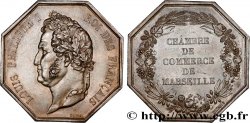fjt_948998 - PROVENCE - JETONS ET MÉDAILLES DU XIXe S. Compagnie d’éclairage au gaz de Toulon, Nîmes et Marseille 1840 (1845-1860)
80.00 €
Cantidad
Añadir a su cesta

Tipo : Compagnie d’éclairage au gaz de Toulon, Nîmes et Marseille
Fecha: 1840 (1845-1860)
Metal: plata
Diámetro: 34 mm
Eje de acuñación: 12 h.
Peso: 14,82 g.
Canto: lisse
Cuño: main ARGENT
Grado de rareza: R1
Comentarios sobre el estado de conservación:
Exemplaire superbe
Anverso
Titulatura del anverso: TOULON. NIMES. MARSEILLE.
Descripción del anverso: Les trois écus des villes accotés, couronnés et posés sur des ancres ; à l’exergue : CONSEIL/ D’ADMINISTRATION.
Reverso
Titulatura del reverso: COMPAGNIE ANONYME D’ECLAIRAGE PAR LE GAZ, AU CENTRE EN QUATRE LIGNES : FONDÉE/ LE/ 5 JUILLET/ 1840.
Descripción del reverso: Couronne de chêne.
Comentario
Le gaz naturel était connu depuis l'Antiquité notamment en Perse mais ce n'est qu'à la fin du XVIIIe siècle que l'idée d'un éclairage au gaz apparut. Le procédé ne se répandit que dans la première moitié du XIXe siècle notamment à partir de 1820. Le gaz utilisé était obtenu par distillation de la houille et servait à éclairer les rues puis les logements. Il servit par la suite comme chauffage mais disparut pour l'éclairage en raison de la diffusion de l'éclairage électrique dès 1880.
Natural gas had been known since antiquity, particularly in Persia, but it was not until the end of the 18th century that the idea of gas lighting appeared. The process did not spread until the first half of the 19th century, particularly from 1820. The gas used was obtained by distillation of coal and was used to light the streets and then the dwellings. It was later used as heating but disappeared for lighting due to the spread of electric lighting from 1880.
Natural gas had been known since antiquity, particularly in Persia, but it was not until the end of the 18th century that the idea of gas lighting appeared. The process did not spread until the first half of the 19th century, particularly from 1820. The gas used was obtained by distillation of coal and was used to light the streets and then the dwellings. It was later used as heating but disappeared for lighting due to the spread of electric lighting from 1880.








 Informar de un error
Informar de un error Imprimir la página
Imprimir la página Comparte mi selección
Comparte mi selección Haz una pregunta
Haz una pregunta Consignar / vender
Consignar / vender
 Descriptivo
Descriptivo








